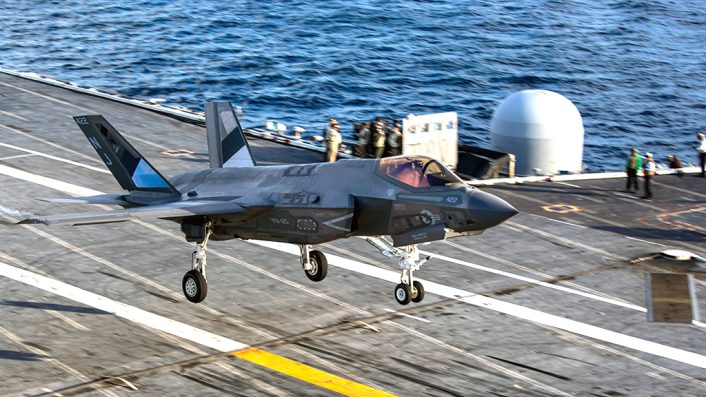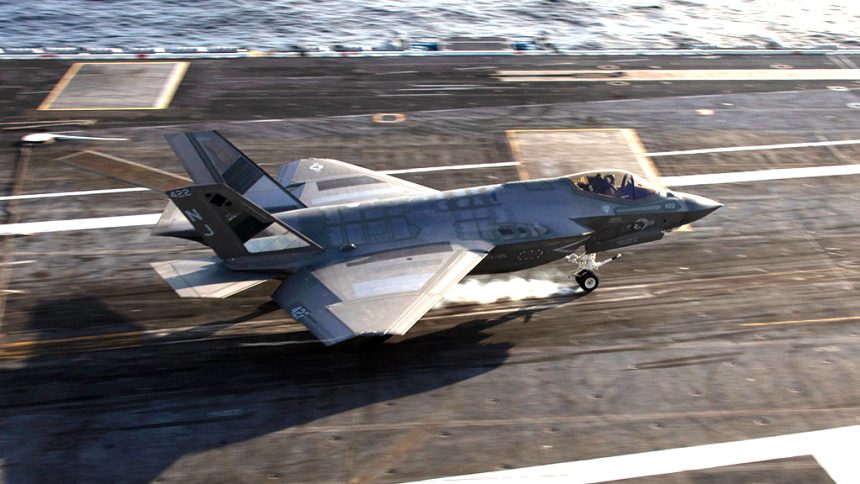The aircraft, assigned to Strike Fighter Squadron (VFA) 125, was photographed during flight operations as the ship is underway in the Pacific Ocean.
A new F-35C Lightning II with a mirror-like coating has been recently spotted, and this time it is not assigned to the Air Test and Evaluation Squadron Nine (VX-9) out of Naval Air Weapons Station China Lake. In fact, this F-35C is assigned to Strike Fighter Squadron (VFA) 125, also known as the “Rough Raiders”, a Fleet Replacement Squadron from NAS Lemoore, California.
Even more interesting is the fact that the aircraft was photographed during a touch and go on Nov. 30, 2023, on USS Abraham Lincoln (CVN 72), which left San Diego earlier that day and is currently underway conducting routine operations in the Pacific Ocean.
This is the first time, at least to our knowledge, that this exotic scheme of the F-35 was spotted in a carrier environment.
This time, the coating was not applied extensively as in the other cases, but can be seen only on both sides of the vertical tails and wings, while the fuselage has the standard F-35 coating. The “chrome” coating alternates dark and shiny patches, making up three larger stripes of different colors.
… F-35C that is not assigned to the Navy’s VX-9 test and evaluation squadron with the coatings and the first time it is seen on an aircraft carrier.
It is suspected that the coatings are meant to reduce the infrared signature of the aircraft.
2/2 pic.twitter.com/15xR2Pm8wV
— Aerospace Intelligence (@space_osint) December 2, 2023
We still don’t know the origin of these coatings, but there is the possibility these aircraft are involved in testing activities related to counter-IRST (Infra Red Search & Track) technologies or targeting systems, or it acts as a testbed for some technology that will eventually made its way to the 6th generation aircraft or even some kind of radar absorbent material replacement.
While it is unknown why the new coatings are being used by a FRS on an aircraft carrier, a plausible hypothesis is a test in the harsh maritime environment with aircraft subject to a high volume of flight activity. In fact, during the first operational deployments of the F-35C aboard aircraft carriers around the world, it has been noted that the RAM showed significant wear and tear in the demanding maritime environment, with what appeared to be rusty-looking deposit all across the aircraft.










